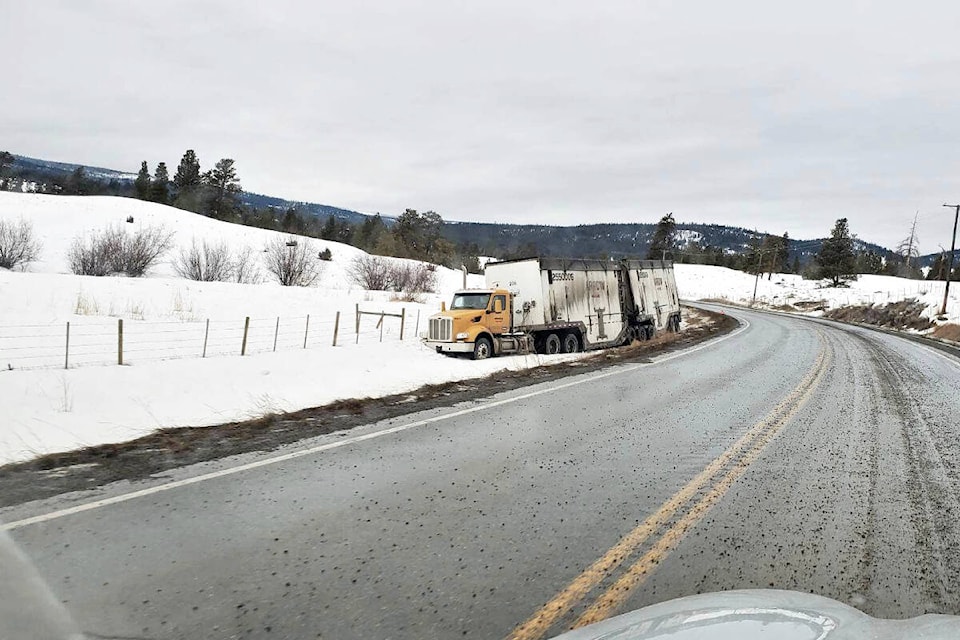The provincial government will be introducing new technology that monitors commercial vehicles, in an attempt to improve safety for local residents and drivers on Highway 5A.
Weigh-in-motion and automatic vehicle-identification systems will monitor commercial vehicles at highway speeds using sensors built into and above the highway. The sensors will measure real-time safety and vehicle data, such as weight, height, and tire conditions, and compare the data against enforced standards.
Commercial vehicle data will be relayed directly to mobile Commercial Vehicle Safety and Enforcement officers in the area, enabling more efficient intervention and enforcement of safety standards.
This new system, located approximately three kilometres north of Merritt, will be the first exclusively virtual system in the province. Construction is expected to begin in late spring and be completed in the fall.
The Ministry of Highways has stated that Highway 5A is an important alternative route for the trucking industry, as the higher elevations make the Coquihalla Highway more susceptible to extreme weather conditions. Commercial vehicles also use Highway 5A for local deliveries, forestry, and agriculture.
However, residents along the highway have been expressing concerns about the safety of the route for two decades. In 2021 a study was commissioned by Stump Lake Ranch to examine traffic volume and collision rates along the highway, and it found that Highway 5A had a higher rate of collisions compared to Highway 5.
The report also noted that Highway 5A has narrow shoulders for the level of truck traffic it sees at times. Report author Haytham Sadeq said that there were many locations that did not have any clear zone that allowed for a margin of error. The lakes along the highway did not allow for the placement of concrete barriers, which increased the consequences of collisions.
The report also found that the number of trucks using the highway daily ranged from 270 to nearly 500. Approximately 2,000 vehicles of all types used the highway every day.
Some residents along Highway 5A have been pushing for a complete ban on truck traffic along the route. Data presented to the Thompson-Nicola Regional District in December 2020 noted that in 2018, 26 per cent of the crashes on Highway 5A north of Merritt involved semi-trucks, compared to 18 per cent in 2013.
In March 2021, the Ministry of Transportation told the TNRD that banning commercial trucks on Highway 5A would not make the route any safer. The BC Trucking Association said that it was “unequivocally” against such a ban.
In fall 2021, Highways Minister Rob Fleming said that his ministry had “put a lot of work and money into that stretch of highway in the last decade and there’s always more safety improvements too, so we’ve had some general discussions about that.” He also said that in summer 2021 the ministry had carried out a traffic and safety review of Highway 5A.
In July 2022, some residents along Highway 5A created a Facebook group called Highway 5A - Safety First - Facts, Figures & Events. The page notes that while Highway 5A between Kamloops and Merritt is one of the most scenic drives in all of British Columbia, “it is also ill-equipped for today’s large commercial transport trucks. Just kilometres away, the Coquihalla Highway was designed for large vehicles. Highway 5A is a winding route with little to no shoulder space. Sadly, the route is notorious for numerous serious crashes.
“The goal of this Facebook group is to alert motorists to traffic incidents on 5A that may impact travel plans. We encourage photos and videos. In order to hold dangerous drivers to account if possible please share the names of trucking companies involved in crashes and reckless driving.”
editorial@accjournal.ca
Like us on Facebook and follow us on Twitter
